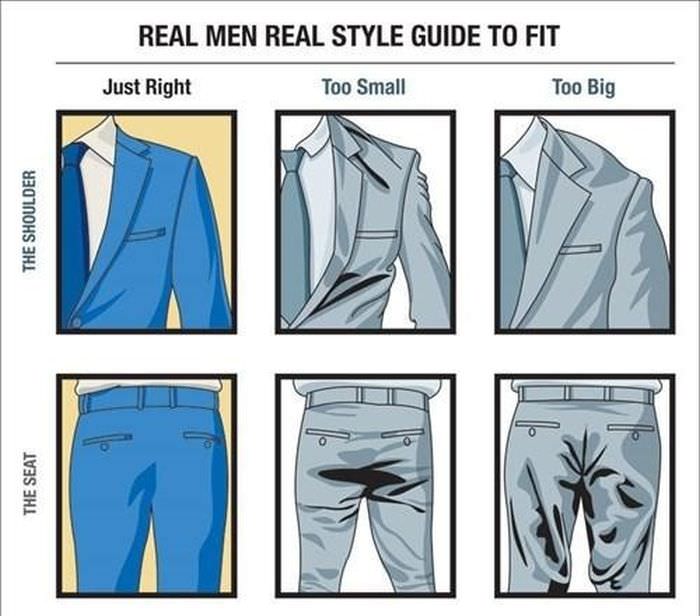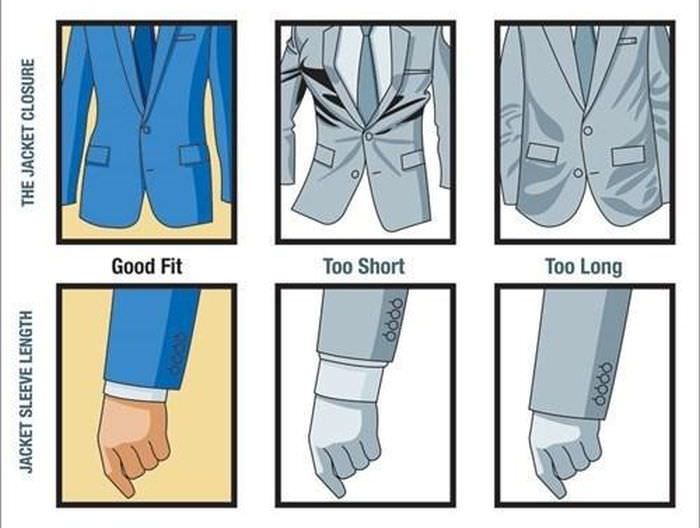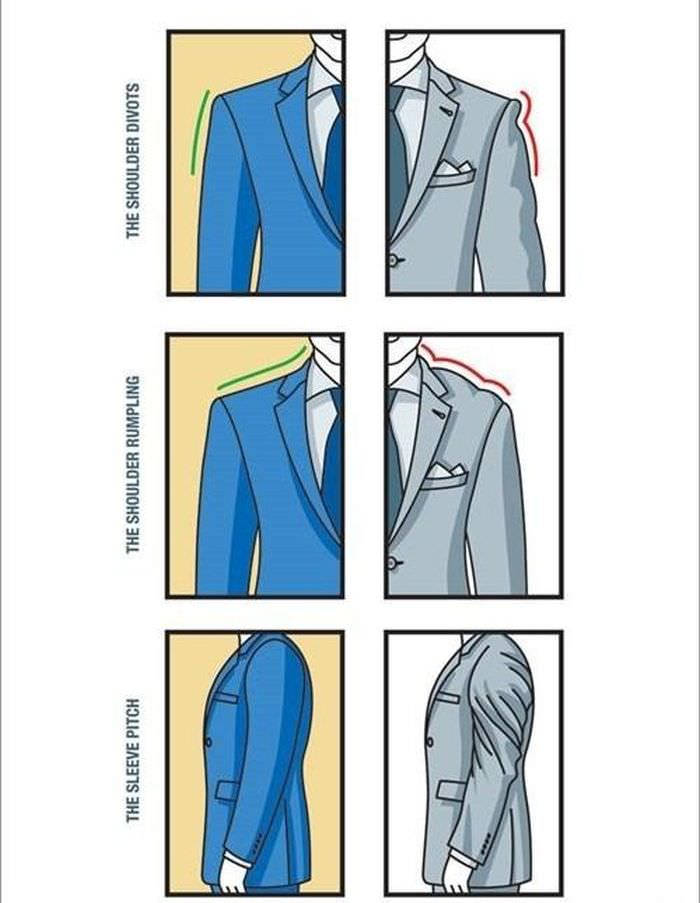
|
A fast and easy cheat-sheet for putting on that look that women love the most - a man in a good suit. Now a good suit is a terrible thing to waste, so make sure you wear it right, and to that, make sure you know how to check for fit by following this simple guide! |
 |
 |
 |
 |
|
1. Natural Stance 5. Jacket Closure When standing in your suit, you should always have the jacket buttoned. That means that when you try on a suit that you'd like to buy, check how the front of the suit closes over your body by closing just one button. You want to make sure that the two sides close neatly, without the lapels pulling in too tight or remaining too loose. Try and purchase a jacket that's somewhere in the middle, because the tailor will not be able to make huge changes to an overly-tight or baggy jacket. 6. Sleeve and Jacket Length These are critical aspects to the look of your suit. The old-fashioned guideline for the relationship between the suit jacket and the shirt worn under it is a half-inch of linen, meaning about half an inch of the shirt cuff should be visible beyond the jacket cuff. For the jacket length, you should look for one that falls past the waist and drapes over the top of your buttocks. Your hands are a great way to tell if the jacket is too long or too short - the hem of the jacket should hit about the middle of your hand, where the fingers meet the palm. 7. The Jacket Collar It's quite easy to tell a well-fitted collar from a poorly fitted one. The jacket collar should rest against your shirt collar, which in turn should rest against the back of your neck. All of these elements should touch lightly without any gaps in between. When the collar is too loose, there will be a gap and it will flop off your neck. When the collar is too tight, there will be bunching and folds just beneath it, and it will wrinkle the shirt collar underneath it as well. 4 Bad Fit Warnings: 1. The X-Shaped Button Strain The wrinkled lines radiating outward from the jacket button when you close the jacket are a sure sign that the jacket is too tight and that it needs adjustment. 2. Shoulder Divots and Upper Arm Wrinkles When the sleeve of the jacket dips in slightly just under the shoulder, this is a sign that the shoulders are much too big. 3. Top Rumpling The noticeable bunching on the top of the shoulder is a sign that the jacket is too large in the shoulders. If this is the case, look for a slimmer fit and if you still see wrinkles on the top, the brand probably isn't good for you. 4. Bad Sleeve Pitch These wrinkles on the outside of the sleeve occur when the angle of the arm (when in your natural stance) does not match the angle that the sleeve was constructed. A tailor can usually remove the sleeves and reattach them at a different angle, but this is by no means a cheap fix. To save you a lot of headache, find a jacket that does not have this problem when your arms are resting in your natural stance. |